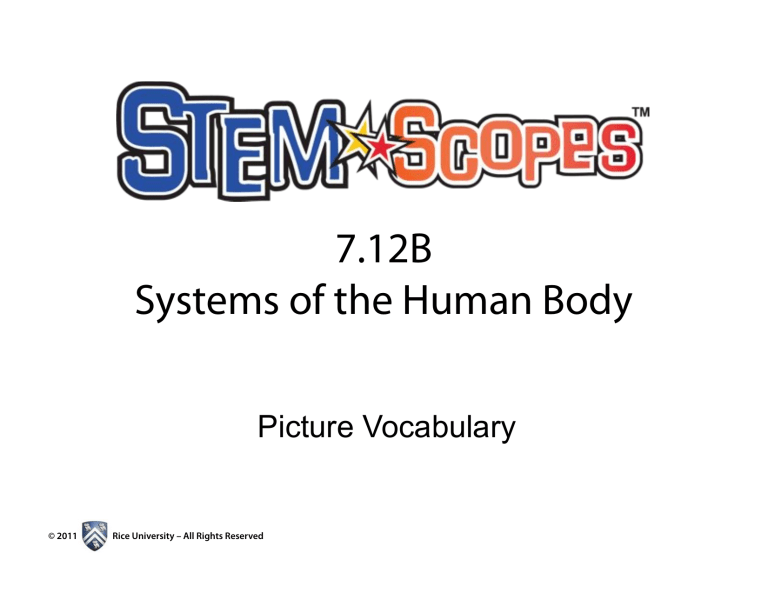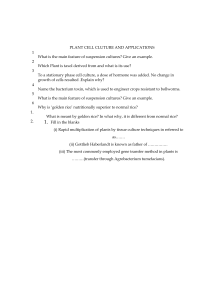
7.12B Systems of the Human Body Picture Vocabulary © 2011 Rice University – All Rights Reserved Integumentary System Includes skin, hair, nails, and sweat glands Reacts to external environmental conditions and protects the body’s deeper tissues © 2011 Rice University – All Rights Reserved Muscular System Includes three types of muscles: skeletal, smooth, and cardiac; also includes ligaments and tendons Allows body to move and provides strength, balance, and warmth © 2011 Rice University – All Rights Reserved Skeletal System Includes the bones and joints Holds organs in place, provides structural support, stores minerals, and generates new blood cells © 2011 Rice University – All Rights Reserved Respiratory System Includes airways, such as the trachea, as well as lungs, and alveoli Breathing supplies oxygen to the blood and gets rid of carbon dioxide © 2011 Rice University – All Rights Reserved Circulatory System Includes heart, arteries, and veins Circulates blood through the body, supplies oxygen and nutrients, and removes waste © 2011 Rice University – All Rights Reserved Nervous System Includes brain, spinal cord, and nerves Functions as the control center, coordinating all actions and reactions © 2011 Rice University – All Rights Reserved Endocrine System Includes glands and hormones Regulates body by secreting hormones into the bloodstream; also controls growth, reproduction, and metabolism © 2011 Rice University – All Rights Reserved Digestive System Includes mouth, esophagus, stomach, small and large intestines, and anus Breaks down food to make absorption into the body possible © 2011 Rice University – All Rights Reserved Excretory System Includes kidneys and bladder Filters, collects, and removes excess fluids and wastes from the bloodstream © 2011 Rice University – All Rights Reserved Immune System Includes lymph nodes, tonsils, and spleen viruses bacteria Protects body by fighting sickness and disease, such as caused by viruses and bacteria © 2011 Rice University – All Rights Reserved Reproductive System Females have a uterus and ovaries and males have a penis and testicles Male and female systems used to produce offspring © 2011 Rice University – All Rights Reserved
